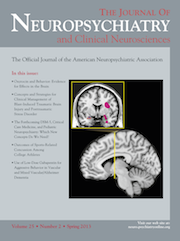How Does Tonic Dopamine Level Affect Decision-Making in Dual Tasks in Parkinson’s Disease?
To the Editor: Centers for secretion and transmission of dopamine are located in the ventral tegmental area (VTA) and substantial nigra pars compacta (SNc) in basal ganglia (BG).1 Two dopamine current levels are entered to striatum (as an important center for decision-making): phasic and tonic levels.1 Phasic level is an abrupt rise in dopamine level in BG as a result of an unexpected reward in normal conditions, whereas tonic level is permanently stable in physiological conditions.2
Loss of dopaminergic cells in VTA disturbs the pattern of phasic level variations and deteriorates the decision-making process.1 However, several studies have reported that decision-making disorders are not only the effect of phasic changes. SNc neurodegeneration would change tonic level and result in severe behavioral disorders.1,2 For instance, patients with Parkinson's disease show performance deficit in dual-task experiments such as simultaneous decision-making and mental activity.3
The influences of phasic level on learning and decision-making in Parkinson’s disease have been studied both in medical research and neurocomputational modeling studies.1,4 However, the indirect influence of tonic level on decision-making, particularly during the second task, has received less attention in modeling studies; for example, decision-making in the Actor–Critic model has two stages: 1) making a decision;4 and 2) evaluating that decision based only on the phasic level as a reward.1,4
According to the abovementioned notes, we suggest adding the effects of tonic level change as another reward parameter in the Actor–Critic model in Parkinson’s disease. It must be noted that the phasic level-based models do not support the experimental results appropriately during dual tasks. For example, it is seen that in dual-task experiments, correcting the phasic level of dopamine did not improve the decision-making process. In dual-task conditions, when a small change in tonic level happens, a big failure occurs during the decision-making process. This would confirm that adding tonic level to the model improve its validity in accordance with human experimental results. Applying this idea, we would be able to consider how the decision-making process is affected by mental tasks such as cognitive functions in Parkinson’s disease; however, appropriate experiments are needed to study this suggestion and to validate it.
1 : A neurocomputational model of tonic and phasic dopamine in action-selection: a comparison with cognitive deficits in Parkinson’s disease. Behav Brain Res 2009; 200:48–59Crossref, Medline, Google Scholar
2 : Computational cognitive models of prefrontal-striatal-hippocampal interactions in Parkinson’s disease and schizophrenia. Neural Netw 2011; 24:575–591Crossref, Medline, Google Scholar
3 : Effects of explicit prioritization on dual task walking in patients with Parkinson’s disease. Phys Ther 2010; 90:177–186Crossref, Medline, Google Scholar
4 : Actor–Critic models of the basal ganglia: new anatomical and computational perspectives. Neural Netw 2002; 15:535–547Crossref, Medline, Google Scholar



